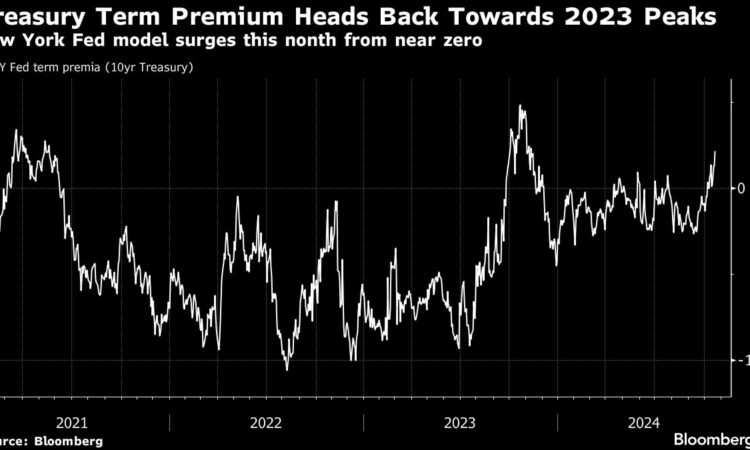
(Bloomberg) — Stocks fluctuated, with traders parsing a slew of corporate results for clues on the health of the world’s largest economy. Treasuries rebounded after days of losses.
Most Read from Bloomberg
A gauge of the “Magnificent Seven” headed toward a three-month high, with Tesla Inc. up 19% after Elon Musk’s electric-vehicle giant reported strong earnings and forecast as much as 30% growth in car sales next year. United Parcel Service Inc. — a barometer of economic activity — jumped 5% after returning to sales and profit growth. A slide in International Business Machines Corp., Honeywell International Inc. and Boeing Co. shares weighed on the broader market.
“Despite the possibility of more volatility as we get deeper into earnings season and close in on the November election, the market’s longer-term outlook remains solid,” said Daniel Skelly at Morgan Stanley’s Wealth Management Market Research & Strategy team.
The market barely budged after Thursday’s economic data, with new home sales beating estimates, initial jobless claims dropping and business activity expanding at a solid pace.
“Goldilocks data that’s in-line with expectations (so not too good or too bad) is the best outcome for a continued rebound in stocks and bonds,” said Tom Essaye at The Sevens Report.
The S&P 500 was little changed. The Nasdaq 100 climbed 0.6%. The Dow Jones Industrial Average dropped 0.5% — poised for a fourth consecutive day of losses — the longest losing streak since June.
Treasury 10-year yields declined five basis points to 4.20%. Thursday’s $24 billion five-year TIPS auction is poised to draw the lowest auction yield in more than a year as inflation-protected Treasuries have outperformed since the Federal Reserve cut rates last month.
Oil slipped as oversupply concerns overshadowed the possibility of an Israeli retaliatory strike on Iran. Palladium surged as the US asked the Group of Seven allies to consider sanctions on Russian exports of the precious metal.
“The market appears to be driven by the projected outcome of the earnings reporting period, the presidential election, and the bond market’s interpretation of future monetary actions by the Federal Reserve,” said Sam Stovall at CFRA. “Investors see the resiliency of the economy and employment forcing the Fed to be ‘slower to lower’ on rates. We still see two 25 basis-point rate cuts in 2024.”
